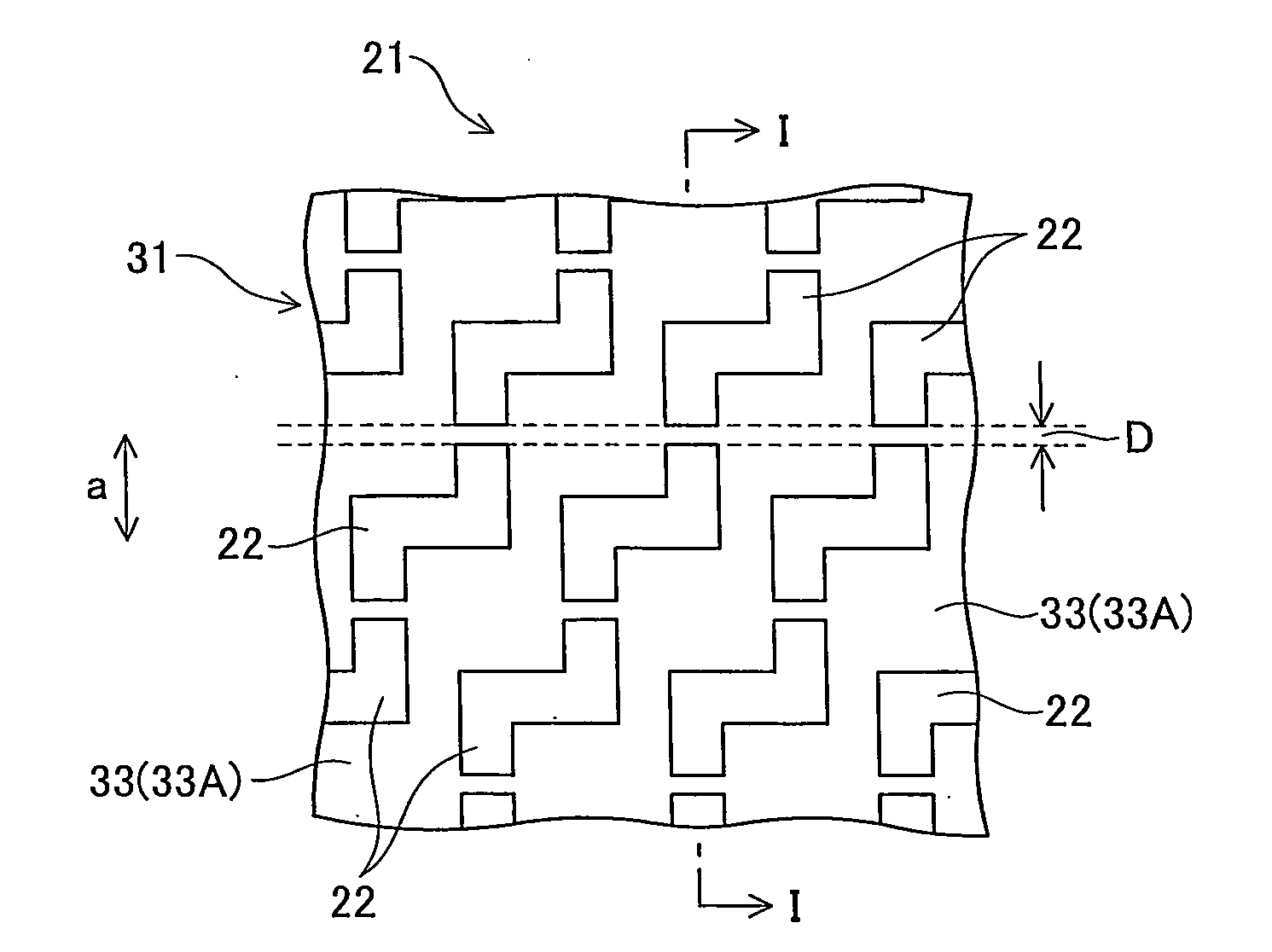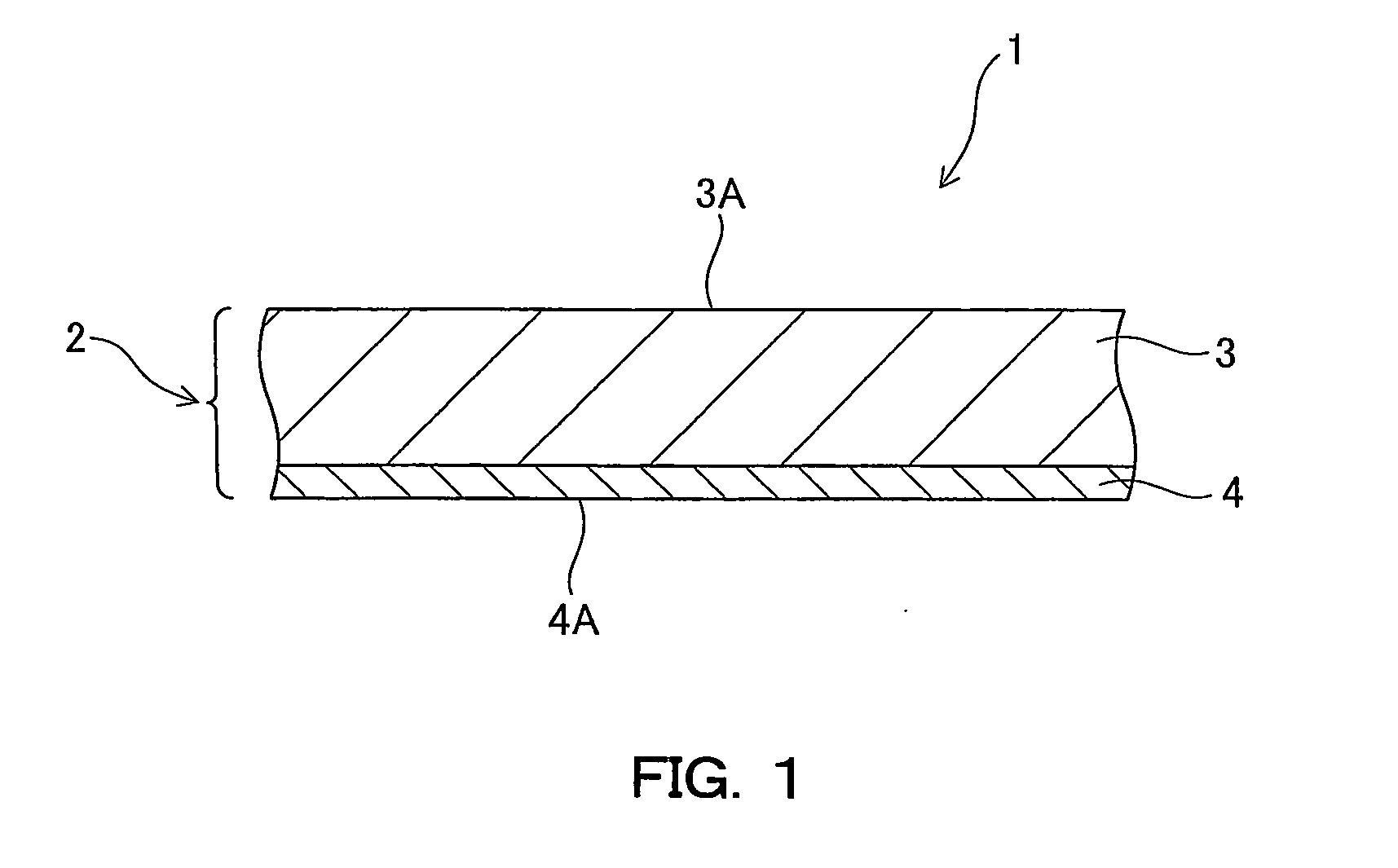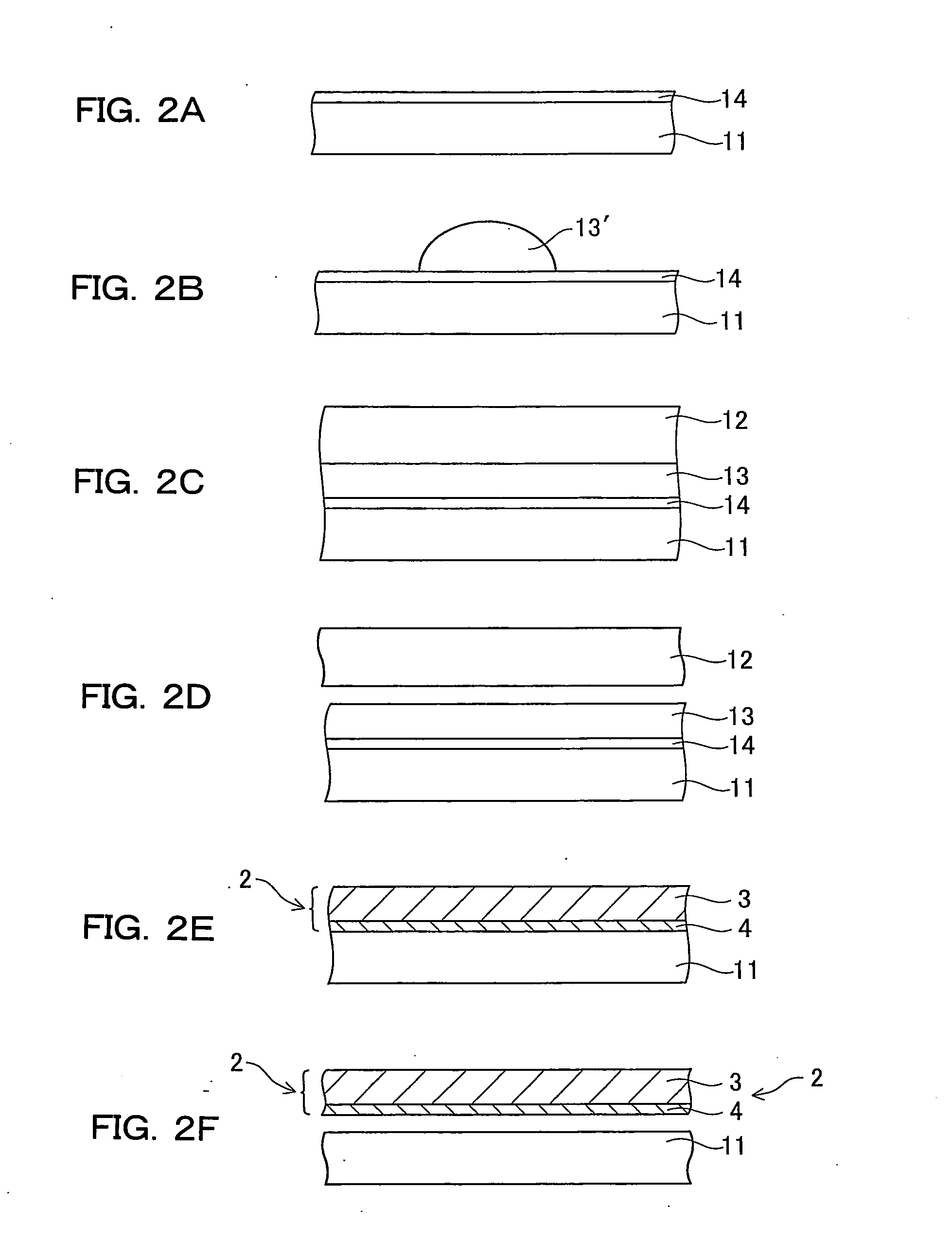Polydimethylsiloxane sheet, optical element incorporating the same, and manufacturing method thereof
- Summary
- Abstract
- Description
- Claims
- Application Information
AI Technical Summary
Benefits of technology
Problems solved by technology
Method used
Image
Examples
example 1
[0104]There was a silicon substrate of 0.625 mm in thickness and 150 mm in diameter provided as the support substrate. This support substrate was found to have a surface average roughness Ra of 0.001 μm as measured on AFM (L-Trace II made by Seiko Instruments Inc.).
[0105]After a polymerization initiator was mixed with a raw material A for the formation of the low-content PDMS layer, the mixture was spin coated on the aforesaid support substrate to form a coating film A. Given the low-molecular-weight siloxane of a cyclic structure represented by [—Si(CH3)2O—]k where k is an integer of 3 to 20 inclusive, that raw material A was a PDMS having a low-molecular-weight siloxane content of 1,000 ppm. The thickness of the coating film A was set such that the low-content PDMS layer formed by curing had a thickness of 0.1 mm.
[0106]Then, after a polymerization initiator was mixed with a raw material B for the formation of the high-content PDMS layer, the mixture (20 grams) was added dropwise t...
example 2
[0108]Example 1 was repeated with the exception that a PDMS having a low-molecular-weight siloxane content of 7,000 ppm was used as the raw material B for the formation of the high-content PDMS layer, thereby preparing a PDMS sheet.
example 3
[0109]Example 1 was repeated with the exception that a PDMS having a low-molecular-weight siloxane content of 200 ppm was used as the raw material A for the formation of the low-content PDMS layer, thereby preparing a PDMS sheet.
PUM
| Property | Measurement | Unit |
|---|---|---|
| Fraction | aaaaa | aaaaa |
| Fraction | aaaaa | aaaaa |
| Thickness | aaaaa | aaaaa |
Abstract
Description
Claims
Application Information
 Login to View More
Login to View More - R&D
- Intellectual Property
- Life Sciences
- Materials
- Tech Scout
- Unparalleled Data Quality
- Higher Quality Content
- 60% Fewer Hallucinations
Browse by: Latest US Patents, China's latest patents, Technical Efficacy Thesaurus, Application Domain, Technology Topic, Popular Technical Reports.
© 2025 PatSnap. All rights reserved.Legal|Privacy policy|Modern Slavery Act Transparency Statement|Sitemap|About US| Contact US: help@patsnap.com



